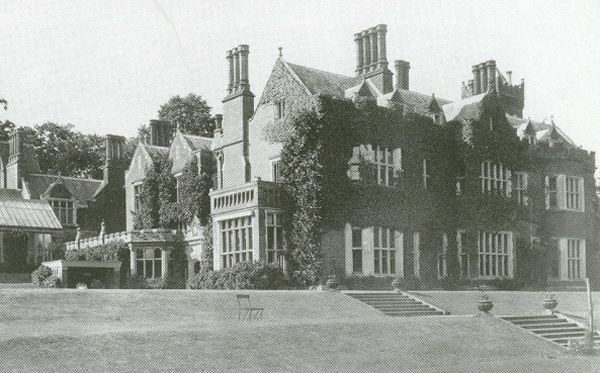|
S.O.E.
Special Operations Executive (S.O.E.) was formed on July 19, 1940. It was primarily concerned with the organisation of agents and cells of resistance throughout occupied Europe, as well as providing them with the weapons and means necessary to resist the German occupying forces and their collaborators.
S.O.E., its headquarters located at 64 Baker Street in London, went under the cover name of Inter Services Research Bureau (I.S.R.B.). The ISRB operated several workshops and laboratories throughout England. The research and development department, Station XII, was based in Aston House close to Stevenage. In addition there was a weapons section located in the barns at Bride Hall known as Station VI, who, among other assignments, was tasked with the gathering of weapons from any imaginable source. One way of doing this was by two appeals to the civilian population to donate any weapon in their possession to the good cause. In this manner alone, 10.000 small arms were acquired for the use of the resistance movements in Europe. The development and production of weapons for the SOE was handled by Station IX.

The Frythe Estate. Photo credit, courtesy of Fredric Boyce from his book: SOE The Scientific Secrets.
The Commander of Station IX, Col. J.R.V. Dolphin, resided in The Frythe, a mansion approximately one hours drive north from London near the town of Welwyn. Built in 1846, The Frythe had for generations been the property of the Wilshere family and was shortly before the outbreak of WWII converted to an exclusive hotel. In August of 1939 however, a group of people from the Military Intelligence showed up on the doorstep with no prior notice and proceeded to inform the staff and residents of the hotel that The Frythe, effective immediately, was seized for the war effort. The proprietor, himself a veteran of WWI who had been severely wounded and a POW, naturally objected but was told that with a war on the verge of eruption, the nation needed the estate. To begin with The Frythe housed Section D (for ´Destruction`), a minor autonomous sabotage department under the Secret Intelligence Service (SIS) and was headed by Major Laurence Grand of the Royal Engineers. The Frythe functioned as headquarters to Section D from the winter of 1939 and until the establishment of SOE in July 1940, who then took over both Section D and The Frythe.
STATIONIX STATION IX
Early on in 1941, the decision was made to separate development from production. Station XII at Aston House took care of the production and Station IX became solely a research and development facility. Under the management of the Chief of Scientific Research, Professor D.M. Newitt, the research was divided into separate areas such as explosives, technical sabotage, camouflage and bacterial- and chemical research. The structure of the organisation reflects the common concern at the time that the enemy would fail to comply with the international agreed upon rules of war. Hence a backdoor was kept open with regards to a possible expansion of SOE activities to include bacteriological and chemical warfare as a counter measure.
Station IX now busied itself with the research and development of weapons and gear to be distributed to the resistance movements. Small cabins and barracks began to sprout all over the estate taking up function as laboratories and workshops. One of the more renowned innovations to immerge from The Frythe was the "Time-pencil", a small and compact delayed-ignition device that could set off a detonator or a Bickford fuse. It was a huge success and 12 million Time-pencils were subsequently produced under the control of Station XII.

Bride Hall, The Frythe og Welwyn.
Station IX rapidly became a key factor in the support of the resistance movements and agents behind enemy lines in occupied Europe. One among many successful SOE projects developed at Station IX was the Welrod pistol. The Welrod was so named by combining the first three letters of the town Welwyn - Wel - with the English word "rod".
The name Welbike came about in the same manner. Behind the name was a collapsible 98 cc motorcycle that at a speed of 30 mp/h had an operating range of 90 miles and could be dropped together with a parachute agent. Just under 4000 were produced by the Excelsior Motorcycle Company in Birmingham. Welman was synonymous with a 20 foot one-man submarine, propelled by a 2,5 hp electrical engine with an effective range of 33 miles at a speed of 2,1 knots, and a max dive depth of 300 feet. In addition to the diver it was capable of carrying 450 pounds of explosives. The Welgun was a compact 9mm. submachine gun and the Welpen a pencil-gun but to mention a few. Only the imagination was the limit. An itching-powder, known as Mucuna, was thus produced with the purpose of polluting the uniforms of the enemy. During my research I actually came across one documented incident where Mucuna was used in Denmark.
|
